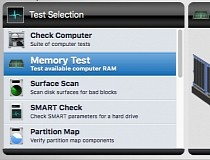

In fact, Apple states that this secure erasure meets United States Department of Defense security standards.īefore performing the secure removal, Mac OS X prompts users to confirm the secure removal operation by clicking the Secure Empty Trash button. Instead of just removing a directory entry to the file or files in question, Mac OS X's Secure Empty Trash command initiates a series of seven different passes in which random information is written to the hard disk sectors previously occupied by that file. The Secure Empty Trash command prompts Mac OS X to perform a seven-pass erasure of the file. Instead of clicking Finder and selecting Empty Trash, Mac users can instead choose Secure Empty Trash. Mac business users removing sensitive, confidential, proprietary or otherwise protected information requiring secure deletion can leverage Mac's native secure removal feature. An ill-intentioned user can often run common data rescue or recovery utilities, such as Prosoft Engineering's Data Rescue, Alsoft's DiskWarrior, or Micromat's TechTool Pro, and recover those deleted files.

Files are selectively moved to the Trash and summarily deleted by clicking Finder and selecting Empty Trash.įiles removed in this fashion frequently prove recoverable, however. Most Mac users are familiar with the file removal process. It's more important than ever to ensure proprietary data, medical and/or financial information and other confidential files are securely removed from a system, external disk or portable drive when no longer needed, discarded, or decommissioned. Businesses using Macs aren't immune from malware attacks, stolen systems or other orchestrated attacks designed to provide unauthorized access to sensitive information.


 0 kommentar(er)
0 kommentar(er)
